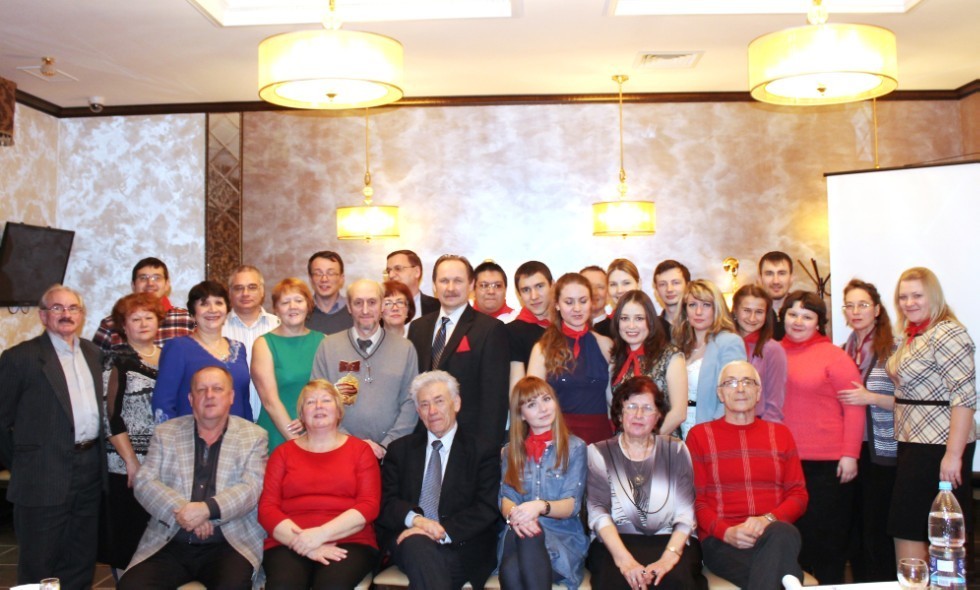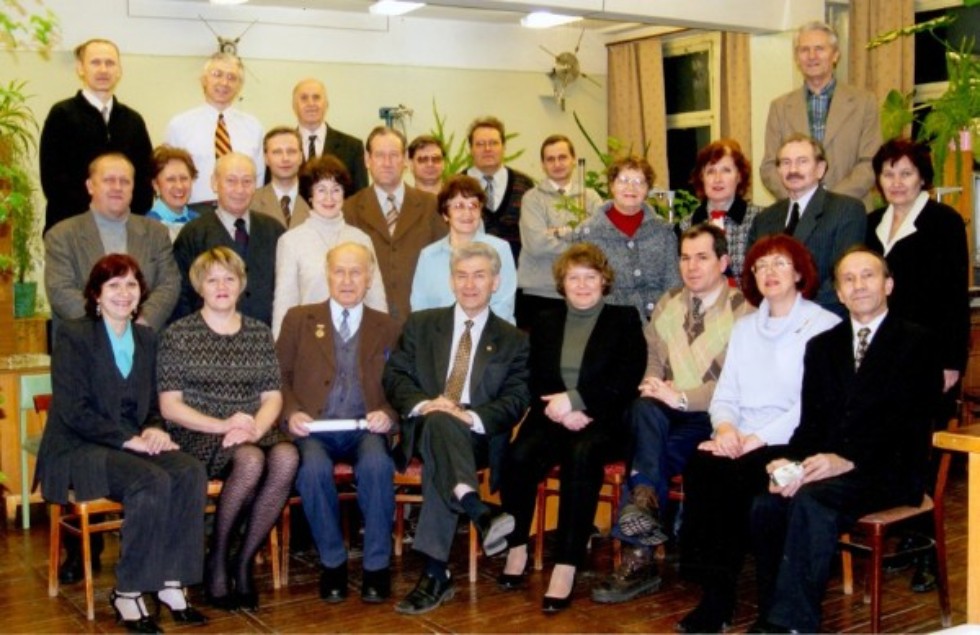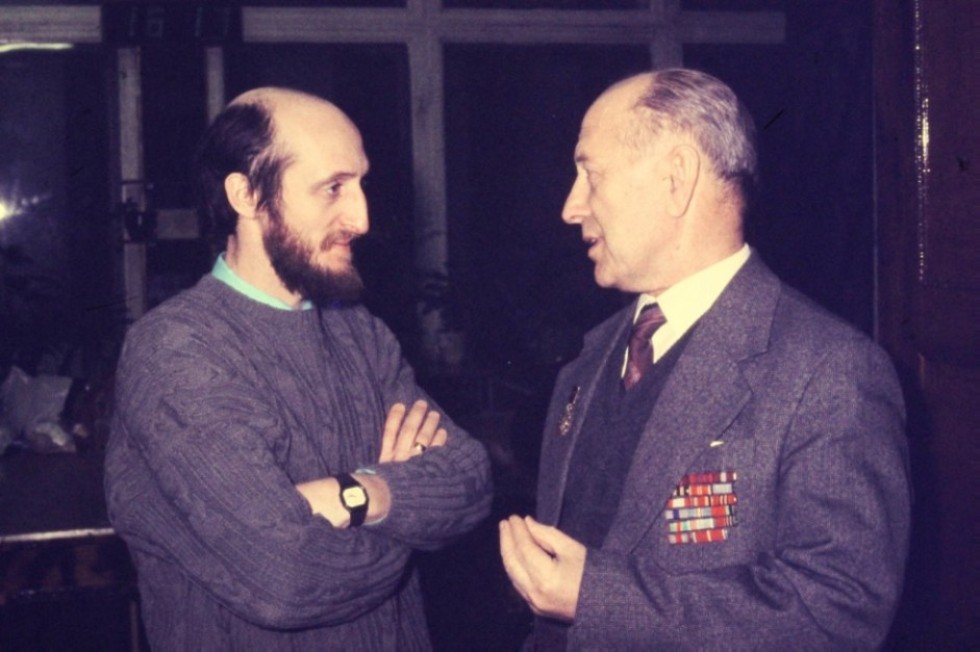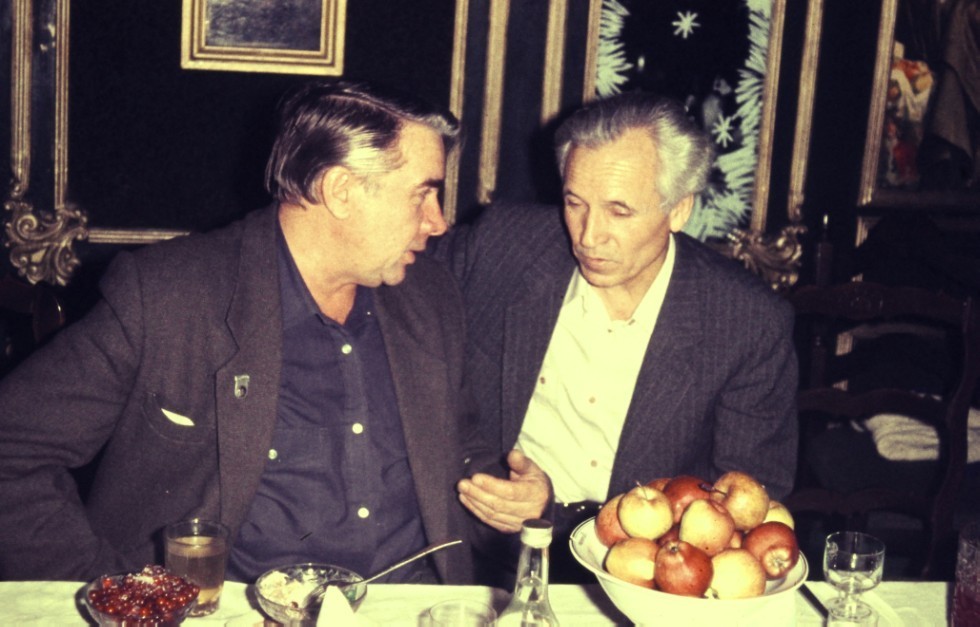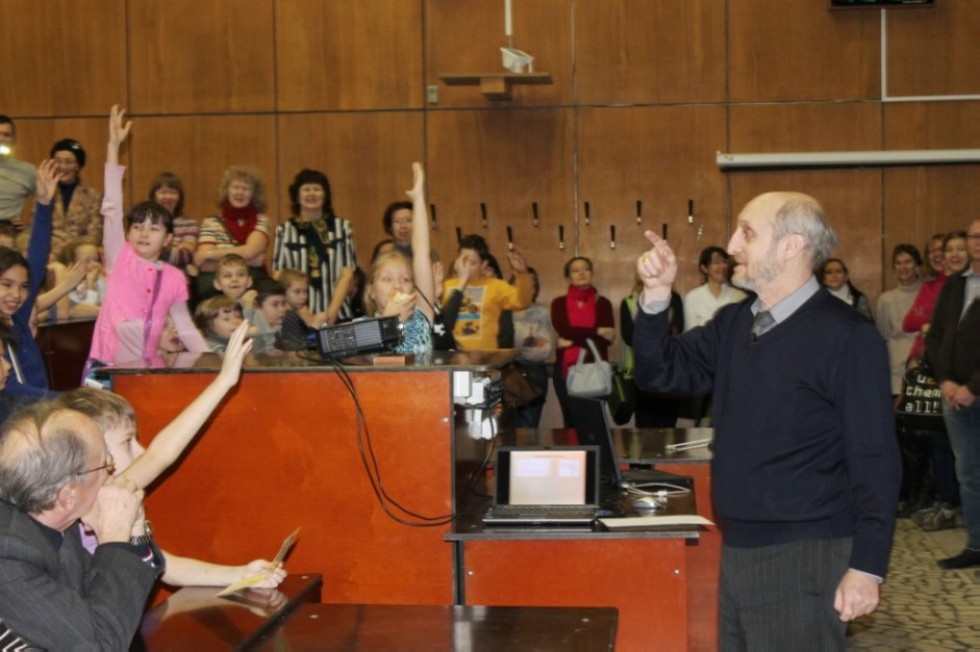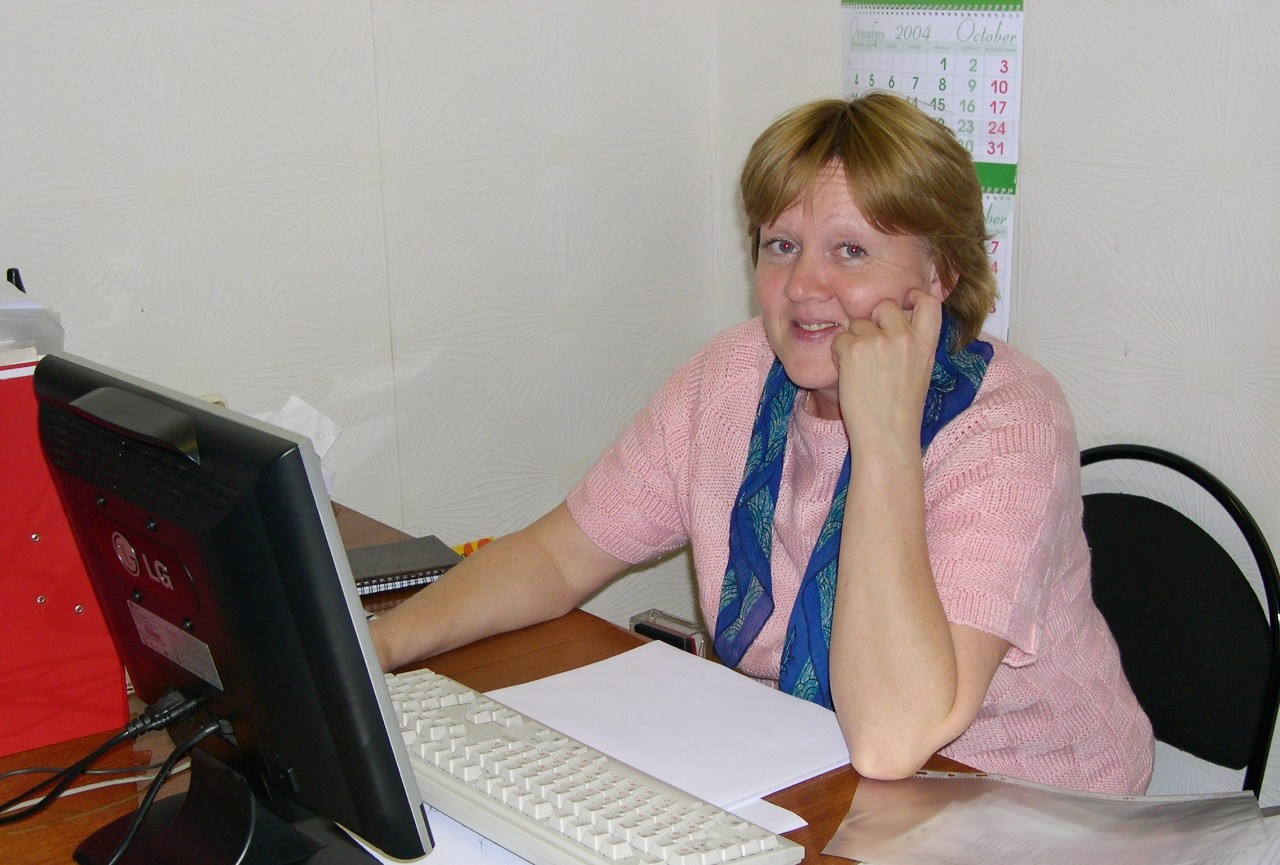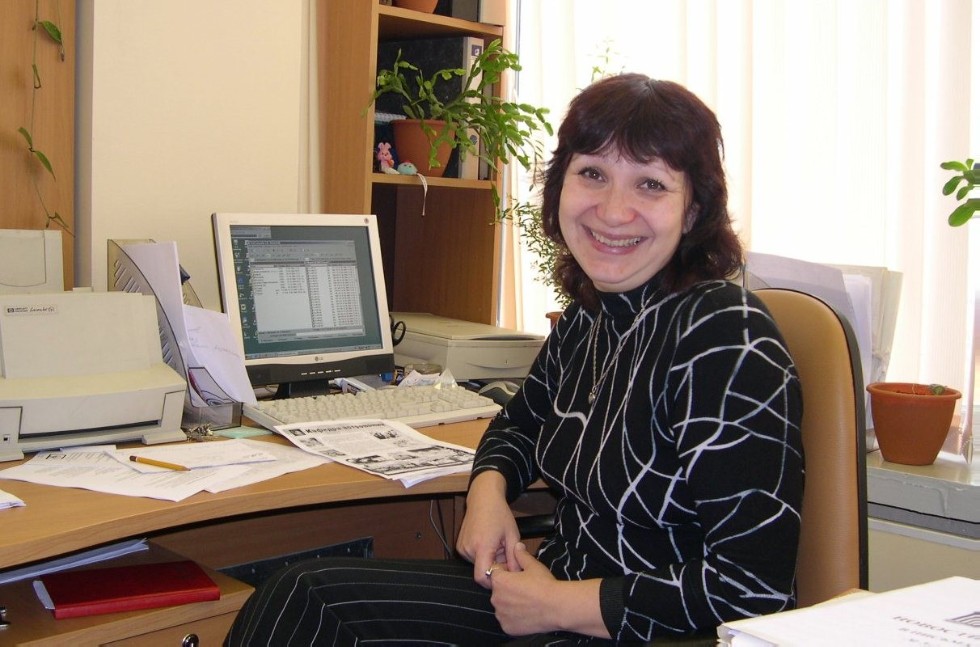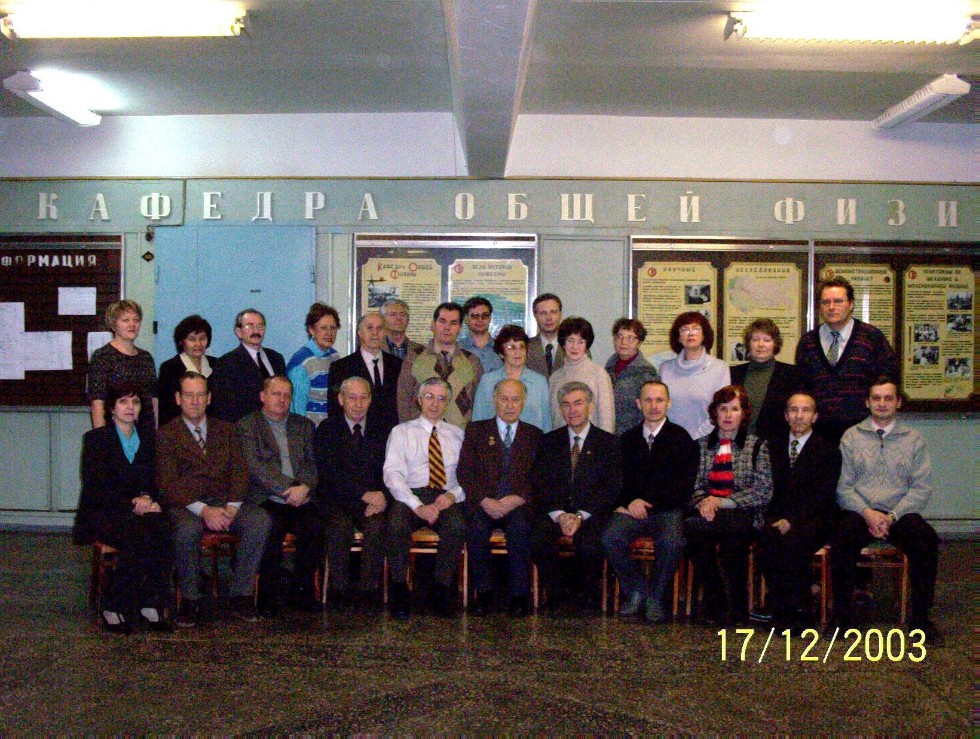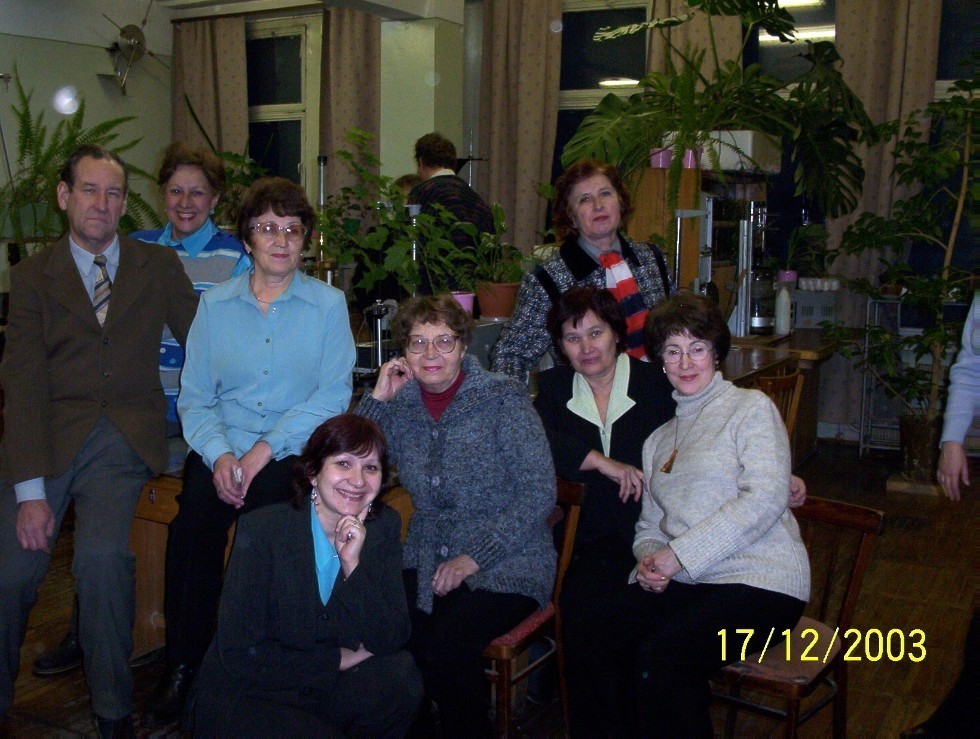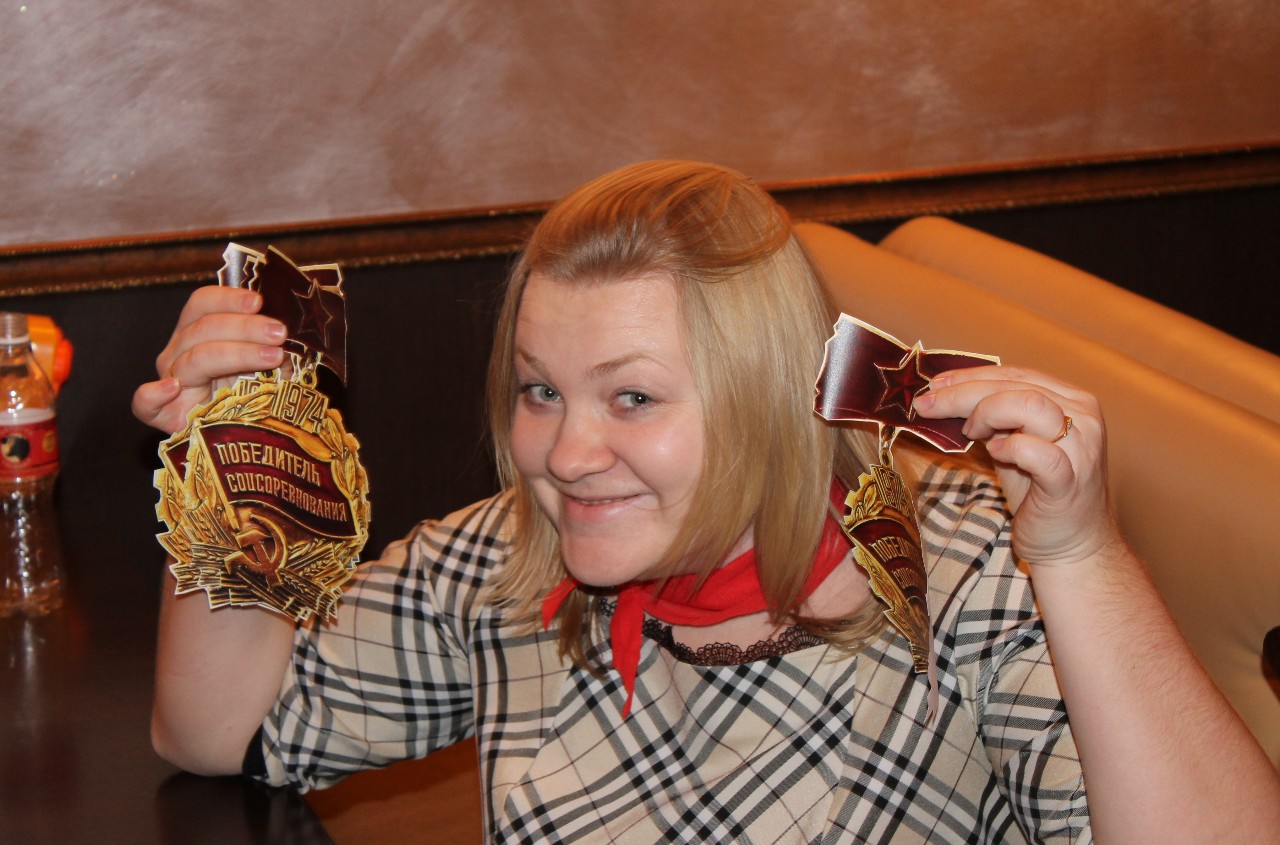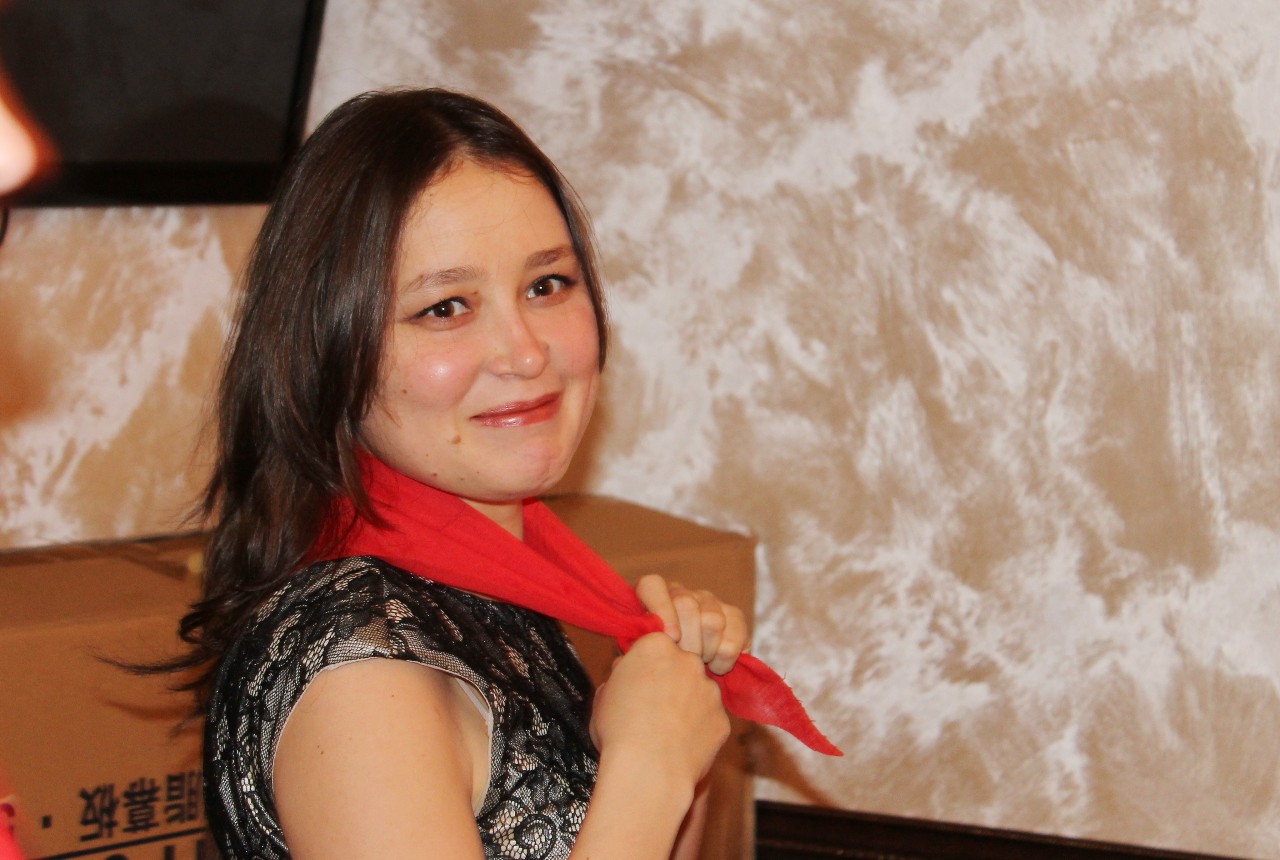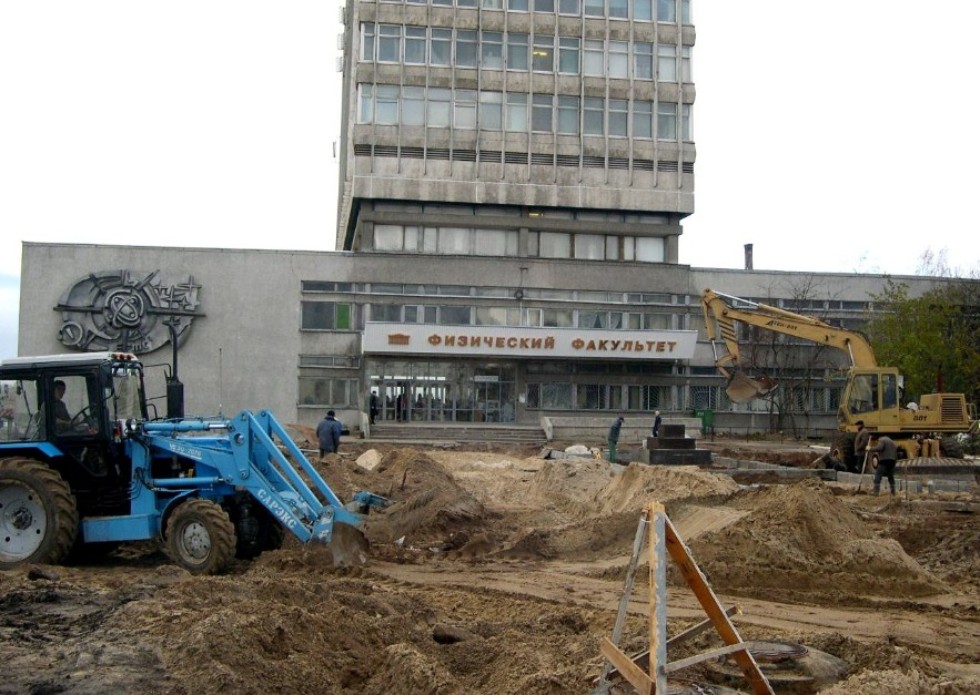History Department of General Physics
The Department of General Physics, then it was called the Department of Theoretical and Experimental Physics, opened a list of the departments of the Faculty of Physics and Mathematics, defined by the Statute of the Imperial Kazan University on November 5 (17), 1804s. The department was created on the basis of the Kazan Gymnasium, its teacher I.I. Zapolsky became the first professor of physics at the university and the first head of the department (until 1810). The successor to Zapolsky was the German professor KI. Bronner, who headed the department until 1817s. In 1819-1833s. the department was headed by N.I. Lobachevsky, for the first time in Russia, developed and read to Kazan students a course in mathematical physics and created one of the best in Europe physical classrooms. Practically from the very beginning of the functioning of the Department of Physics, meteorological observations were carried out (since 1811, the publication of their publication was started in the newspaper "Kazanskie Vedomosti") and since 1833s, the department is called the Department of Physics and Physical Geography. In subsequent years, the work of the department was carried out under the guidance of talented scientists A.S. Savel'eva, RA Collie, N.P. Sluginova, D.A. Goldhammer, V.A. Ulyanina, E.K. Zavoisky. In the second half of the XIX century. The traditional at the Department of Physics became research in the field of electromagnetism: Professors A.S. Saveliev, R.A. Collie, N.P. Sluginov studied the nature of the electric current in electrolytes and the practical application of electrolysis. Since 1897s. For a quarter of a century the Department of Physics was headed by prof. YES. Goldgammer, who developed the theory of optical phenomena from the point of view of Maxwell's electrodynamics and in fact from the end of the 19th century. the study of the interaction of electromagnetic radiation with matter has become the dominant direction of the work of Kazan scientists-physicists. The development of this direction led to the middle of XX century. to the emergence of modern scientific schools associated with the study of resonance properties of condensed matter, optical spectroscopy of atoms and molecules.
At the beginning of the 20th century, a large number of instruments for lecture demonstrations on various branches of physics were in the physical cabinet of Kazan University. Some of them are demonstrated in our time, for example, experiments on the interference of polarized beams, included in a set of optical lecture demonstrations, sent to the Kazan University by V.P. Engelhardt in 1897. together with the equipment of the Astronomical Observatory. In the years 1922 - 1931ss. Department of Physics headed by prof. V.A. Ulyanin, one of the leading lecturers-physicists, a talented scientist, a teacher, known for his scientific works in the field of optics and geophysics. A new stage in the development of physics at the Kazan University dates back to the 1930s, and is associated with the names of talented graduates of the early 1930s. - the experimenter E.K. Zavoisky and the theoretician S.A. Altshuler. In the 1930s. the Institute of Postgraduate Studies began to develop in the physical department and in 1932 the program for the postgraduate students of KSU was developed at the Department of Physics, according to which the profile of the PhD students could include specialization in both theoretical physics and experimental (radio engineering, high voltage, electrical properties of dielectrics, etc.). Since 1932s. the department began to be called the Department of Physics, and in 1938, there was a division of the Department of Physics into the departments of experimental, theoretical and general physics. In 1933s. E.K. Zavoisky was appointed acting head of the department of physics. He actively engaged in the creation and equipping of new experimental educational and scientific laboratories, got acquainted with the methods of teaching physics in the leading universities of the country. Over the course of seven years, modern laboratories for general physical practical work and special practical classes were created, an optical laboratory, a laboratory for vibrations and waves, a laboratory for radiophysics and radio engineering, vacuum and measuring equipment, a mechanical workshop and other structures. In the years 1933-1934ss. at the Department of Physics, the number of courses in theoretical physics has increased substantially. Students began to give lectures on quantum mechanics, statistical physics, and a number of others. From 1938 to 1963s. Department of General Physics was headed by Associate professor K.P. Sitnikov and by the 1960s. its staff engaged in a variety of scientific topics, developed in different years at the department.
The years of the Great Patriotic War were very difficult not only for the whole country, but also for the departments of the physics and mathematics faculty. At the end of June 1941s, young workers, students and graduates began to leave for the front in the ranks of the Red Army. In July-August, the academic institutes of Moscow and Leningrad were evacuated to Kazan, and are located in the premises of Kazan University. Scientists of academic institutes and teachers of Kazan University took an active part in the work on the task of the Defense Committee: methods were developed to protect ships from magnetic mines, the theory of electromagnetic properties of layered cores for antennas developed, and the problem of creating night vision devices was solved. The Department of Physics was involved in work on classified topics. In the middle of 1943s. employees of the Moscow institutes left Kazan, the Leningadians returned to their native city a little later, after the lifting of the siege of Leningrad.
In the 1960s. there is a division of the physical and mathematical faculty into the physical and mechanic-mathematical faculty. New faculties are opened at the Faculty of Physics, where the teachers of the Department of General Physics begin their studies. From 1963 to 1965s. the department was headed by the senior lecturer V.I. Larichev, who was later succeeded by Professor P.V. Meiklyar (1965-1966), who combined work at the department with the scientific management of the photoprocess laboratory in the Kazan branch of NIKFI, engaged in research in the field of the theory of photoprocesses, the development of astronomical and infrachromatic film, devices were made to control the technological processes of making film. Large research activities and workload P.V. Meklyar served as the reason for his desire to abandon the administration, continuing his great work at the department, including with graduate students (E.B. Kozyreva, P.K. Osipov, L.N. Itskovich).
From 1966 to 1985s. Department of General Physics was headed by Associate Professor R.B. Tagirov, who studied the interaction of incoherent optical radiation with a solid. His energetic activity as head of the department of general physics allowed to raise to a high level both scientific and educational-methodical work (K.P. Sitnikov, P.V. Meiklyar, I.S. Fishman, V.I. Avvakumov, B. Z. Malkin, V.M. Zimin, L.M. Pokrovskaya, D.N. Terpilovsky). Thanks to current scientific research conducted by staff and teachers of the Department of General Physics, contracts were concluded with enterprises and research institutes of various subordination. As a result of the intensive work of the research and scientific-methodological groups of the Department of General Physics, the demonstration room was significantly enlarged, methodical and instrumental physical training was improved.
In the 1960-1970's work of the demonstration cabinet was supervised by assoc. V.I. Avvakumov. During these years considerable state subsidies were allocated for the acquisition of educational equipment. A whole range of new demonstration experiments on optics, gas discharges, radio waves, etc. was introduced into the educational process. The department cooperated with Kazan enterprises: an optical-mechanical plant, an applied optics institute, a motor-building plant. For the mechanical workshop of the department, lathe, grinding and milling machines were purchased, a glass blowing workshop was created, in which an experienced glass blower worked. Muraviev B.V.
In the first half of the 1960s. on the basis of the laboratory of the MRS, the staff of the Department of General Physics studied the new scientific direction - optical spectroscopy of laser crystals, using low-temperature technique and recording Zeeman spectra (A.L. Stolov, F.Z. Gilfanov, I.G. Altshuler).
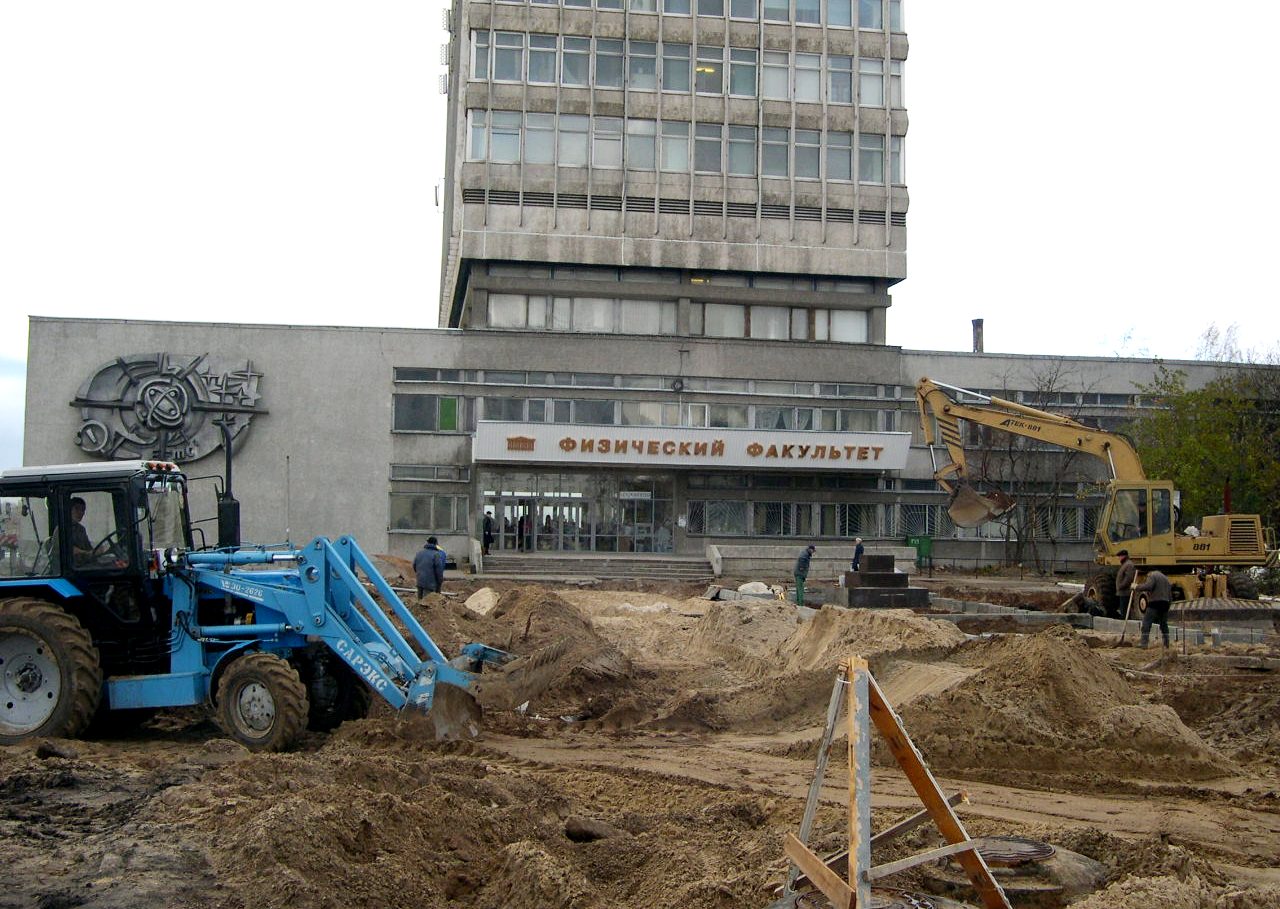
In 1973 Department of General Physics moved to a new building of the physical building. Under R.B. Tagirova at the department has its own scientific theme - the interaction of electromagnetic radiation with matter. Scientific groups from the staff of the department engaged in intensive scientific research on the basis of laboratories of the physics department. On the basis of the laboratory, the staff of the department engaged in research in the field of optical spectrometry of laser crystals. In the 1980s. in the laboratory of mass spectrometry at the Department of Solid State Physics, a scientific group of staff of the Department of General Physics conducted a study of the interaction of incoherent radiation of the optical range with dielectric films on metallic substrates, discovering new phenomena and proving a number of theoretical conclusions (F.Kh. Vakhitov, E.Kh. Iskhakova, V.A. Illarionova, N.I. Kessel, R.V. Daminov, N.M. Shuvalova, G.A. Druzhinin, V.A. Dudkin). Since the early 1980's. at the Department of General Physics on the basis of the laboratory of MRS and CE, studies were carried out of low-temperature magnetism of condensed media, and also the problem of creating experimental cryogenic technology for conducting resonant studies at ultra-low temperatures (M.A. Teplov, M.S. Tagirov) was solved. A resonant magnetic bond was detected at the boundary of the liquid helium-3-van Vleck paramagnet TmES; The experimental regularities of spin-lattice relaxation of nuclei in van Vleck paramagnets are established; The experimental regularities of the spin-lattice relaxation of protons in Ising ferromagnets at ultralow temperatures are established.
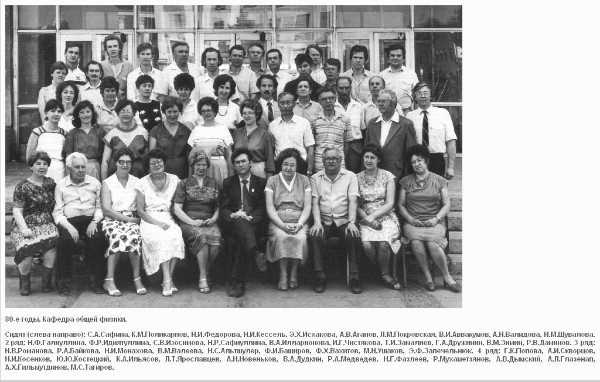
All-Union and international conferences were held at the Department of General Physics. By 1985s the demonstration cabinet already had more than 380 lecture experiments. To ensure the work of the demonstration cabinet, its modernization and the development of new demonstration experiments, N.A. Mikhalin, V.F. Samsonov, V.A. Dudkin, R.A. Medvdev, N.I. Kosenkov. A great contribution to the preparation and implementation of the educational process was made by the teaching and support staff of the department - engineers, laboratory assistants and technicians, who ensure the successful operation of the laboratories of physical practical work (N.I. Kosenkov, N.P. Sakharova, G.K. Popova, N.V. Romanova, T.I. Zamaleev, N.F. Galiullina, A.N. Novenkov, A.N. Validova, A.V. Voloshin, N.L. Trofimova, K.A. Polikarpov, V.M. Valeeva, N.M. Ushakov and many other employees of the department).

From 1985 to 2012s. chair is headed by professor, Doctor of Chemical Sciences, Honored Scientist of the Republic of Tatarstan and the Russian Federation A. Aganov. His research interests are "High Resolution NMR Spectroscopy". Under the leadership of A.V. Aganov formulated a new subject of the department's research, combining several scientific groups "Investigation of molecular rearrangements in solutions of medium-sized organic cycles and acyclic derivatives of phosphorus, nitrogen and arsenic by optical spectroscopy and high-resolution NMR spectroscopy."
Since 1980-1990s at the department new research groups are created, leading scientific developments on fundamental and applied topics. Scientific group under the guidance of prof. M.S. Tagirov conducted scientific research in three main areas: the physical foundations of the dynamic polarization of the nuclei of liquid helium-3; magnetism of Ising dipole ferromagnets; Magnetism of Van Vleck paramagnetics in strong magnetic fields (D.A. Taurskii, V.V. Naletov, staff of MRS and QE). After the departure of prof. M.S. Tagirova for the post of head of the Department of Quantum Electronics and Magnetic Radiospectroscopy studies of dielectric van Vleck paramagnets in strong magnetic fields and quantum liquids continued at the General Physics Department of prof. DA Taurskii and assoc. V.V. Naletov. Scientific interests D.A. Tayursky lie in the theory of the magnetic properties of condensed matter at low and ultralow temperatures. He constructed a theory of kinetic phenomena in spin systems in dielectric crystals at low temperatures, when the spin polarization of the system by an external magnetic field is close to the total one. The obtained theoretical results on the quantum phase transitions in CeRu2Si2, the low-temperature magnetism of metallic scandium and isotopically pure platinum, the propagation of sound in an airgel filled with normal and superfluid helium formed the basis for an explanation of the experimental data obtained by the group of Professor H. Suzuki (University of Kanazawa, Japan ). Scientific research assoc. Naletov V.V. are conducted on the basis of the Department of Quantum Electronics and Magnetic Radiospectroscopy and are associated with investigations of magnetic phenomena occurring at the boundary of a solid and a mixture of quantum helium-3 / helium-4 and the surface structure of Van Vleck paramagnets. In recent years, V.V. Naletov collaborates with colleagues from the University of Paris XI in the field of advanced research using magnetic resonance imaging, as well as studies of the microwave dynamics of ferromagnetic nanostructures and objects of spin electronics.
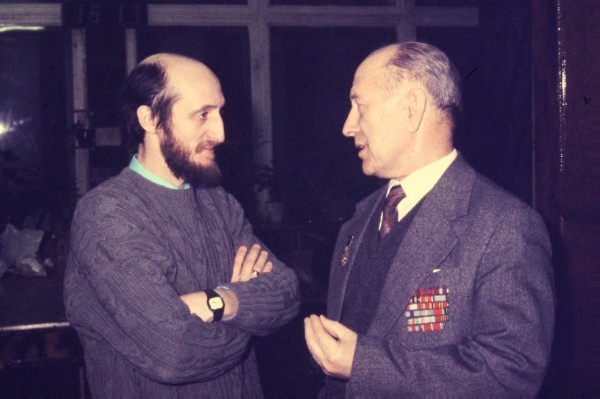
Scientific group of prof. A.I. Fishman was engaged in research in the field of vibrational spectroscopy (N.I. Monakhova, E.A. Filippova, A.B. Remizov, A.I. Skvortsov, A.A. Stolov). The scientific development of the group was concentrated on the study of vibrational spectra and the structure of organic molecules, the search for spectro-structural correlations, the development and development of new methods of molecular spectroscopy for the solution of problems of conformational analysis. A method for determining the thermodynamic and activation parameters characterizing the conformational dynamics was proposed and implemented. Another area of research AI. Fishman since the mid-1980s. became the development and application of methods of nonlinear light scattering spectroscopy in conformational analysis. The research team under the guidance of the now prof., And in those years the assistant of the department A.Kh. Gilmutdinova dealt with the problems of analytical spectroscopy, the physics of low-temperature plasma (Yu.A. Zakharov, A.V. Voloshin, K.Yu. Nagulin, A.R. Somov). The spatial structure of the intensity in the sources of resonance radiation in atomic absorption spectroscopy was investigated and the optical skin effect in sources with a high-frequency plasma was first explained. The world's first atomic absorption spectrometer with spatial resolution was developed. Scientific interests of prof. F.I. Bashirov are connected with the study of the physics of stochastic behavior of molecules in condensed media and its practical applications; A non-standard approach to the description of the inhibited (thermal) local motion of small molecules (PMD) in crystals is proposed, which consists in applying the theory of representations of crystallographic point symmetry groups in full; The theory of MZD, unified for crystals and liquids, is developed, which expands the informativity of spectroscopic methods for studying condensed molecular media. Young teachers of the department actively work in science. assoc. A.A. Mutigullina conducts theoretical studies of the dynamics of nucleons in the framework of an effective theory of nuclear forces. Scientific interests assoc. I.R. Muhamedshin are associated with NMR investigations in high-temperature superconductors in systems with strongly correlated electrons.
Since 1978. and to date, the demonstration cabinet is headed by Assoc. R.W. Daminov. Under his leadership, the park of demonstration experiments in many areas is constantly replenished and improved. Thanks to good equipment, a lot of educational, methodical work is carried out in the demonstration experiments to students of the FPK, schools and colleges. At the demonstration room (R.V. Daminov, I.N. Kochemasov, E.N. Skvortsov) the lecture hall "Physics in entertaining experiments" regularly functions. These classes are conducted in the form of presentations, in which the schoolchildren are shown various spectacular manifestations of physical laws.
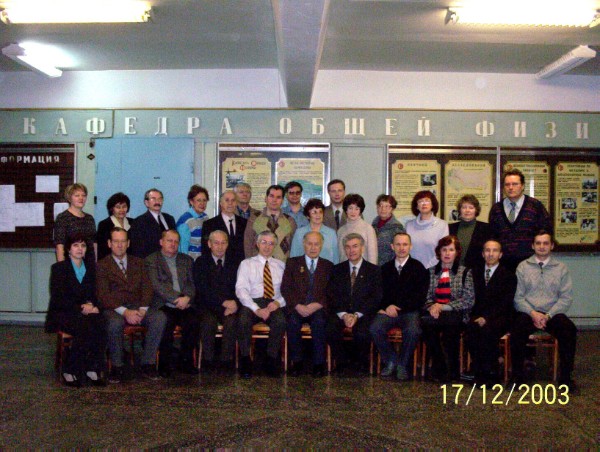
Since 2000 and to this day at the Department of General Physics formed scientific groups engaged in research activities also on the basis of laboratories of other departments of the Institute of Physics.
In 2002s the collaboration of prof. D.A. Tayursky with the Riken Nanotechnology Center and prof. Kono, the laboratory of low-temperature physics, with whom D.A. Tayursky had longstanding scientific contacts and at seminars at the University of Tokyo on several occasions. In august of 2008y. the agreement on the program of joint postgraduate study was signed, which is headed by the Russian side prof. D.A. Tayursky. In october 2010s. The agreement on scientific cooperation between the Institute of Physics of the KFU and the Institute of Advanced Sciences (Advance Science Institute), which is part of the RIKEN, was signed, as well as an agreement on the organization of a joint laboratory complex KFU-RIKEN in the Physics Institute of the KFU, It includes laboratories of femtosecond spectroscopy, the physics of strongly correlated systems and the synthesis and analysis of thin-film systems. In the year 2009s. prof. YES. The educational and research center "Physics of Complex Systems" (O.V. Nedopekin, Yu.V. Lysogorsky, N.R. Beysengulov) was founded in D.A. Tayursky in order to implement the innovative international master's program jointly with the Institute of Problems of Mechanics and Modern Materials Science ISMANS (g Le Mans, France). In 2015s, on the basis of the Department of General Physics, there was a transformation of the Medical Physics Center into the Department of Medical Physics, which was headed by prof. Aganov A.V.
From 2012s to the present time the Chair of General Physics is headed by prof. Taursky Dmitry Albertovich.
In 2018s the department celebrated its 80th anniversary.























